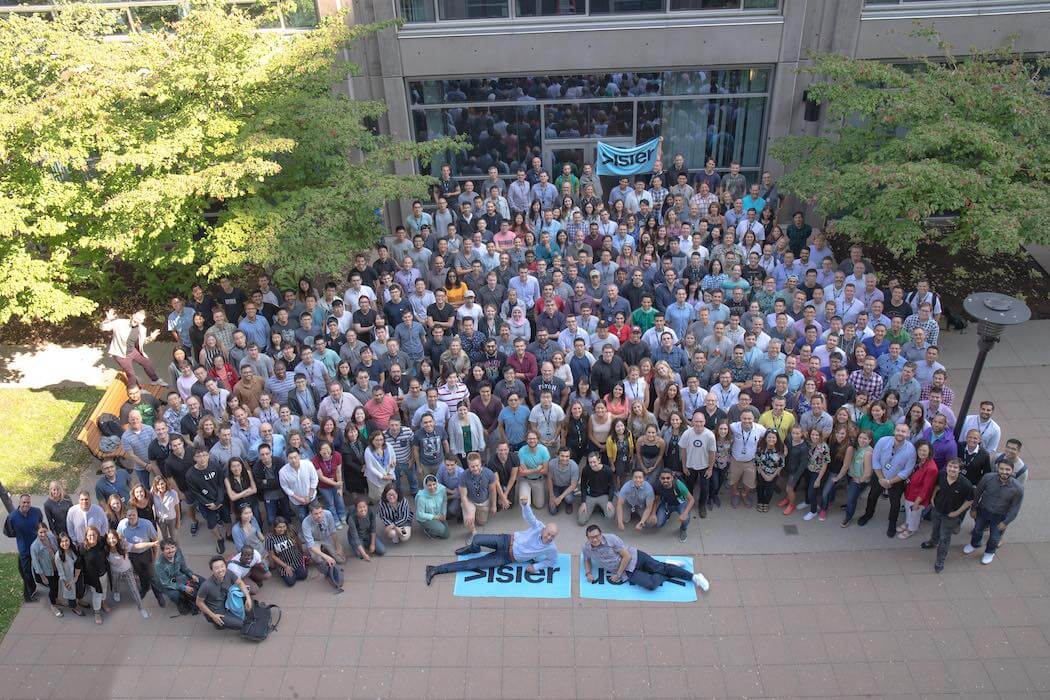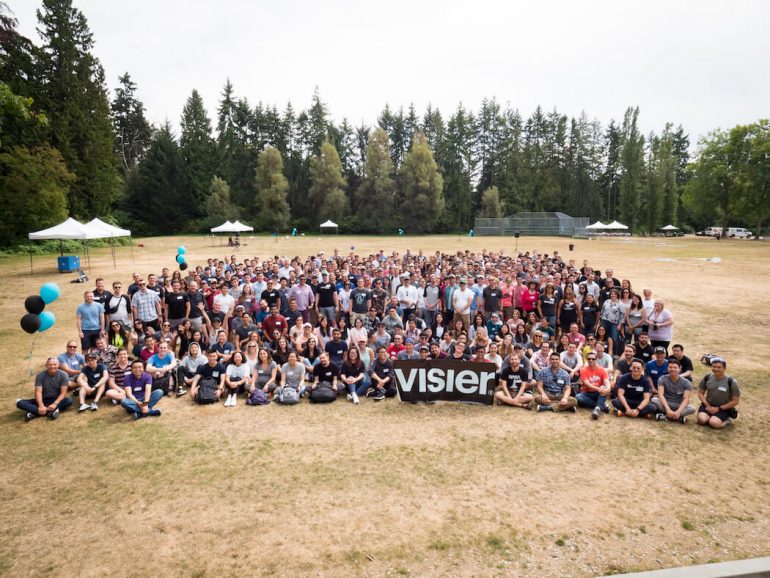Workforce analytics company Visier has secured $154 million CAD ($125 million USD), becoming the latest Canadian tech startup to surpass a $1 billion valuation.
The all equity, Series E round was sole-sourced from Goldman Sachs Asset Management and brings Visier’s valuation to $1.2 billion CAD ($1 billion USD).
“This whole returning to work is not going to be smooth sailing.”
An already profitable company with a healthy bottom line, Visier raised the capital after Goldman Sachs expressed interest in helping the startup optimize for companies facing new human resource (HR) challenges coming out of COVID-19.
Visier is a Vancouver-based startup that offers cloud-based workforce analytics software. Its tech helps companies build programs and plans focused on employee wellness, retention, and more. The startup was founded in 2010 and currently serves around 8,000 customers, including the likes of Adobe, Bridgestone, Electronic Arts, McKesson, and Uber. Visier is available in more than 75 countries.
It was created by Ryan Wong (CEO), John Schwarz (chairman), Jan Schwarz, and Brett Schwarz. John Schwarz began his career at IBM, later becoming president of Symantec (now NortonLifeLock). He also led Business Objects, which was acquired by SAP. It was there he worked with Wong, who focused on engineering at both Business Objects and SAP after the merger.
This Series E capital brings Visier’s total funding to date to $270 million CAD ( $219.5 million USD). Visier’s past investors include Summit Partners, Foundation Capital, Adams Street Partners, BYU Cougar Capital, and Sorenson Capital.
RELATED: Employee wellness software firm LifeSpeak files for TSX IPO
In addition to the $154 million in primary capital, Goldman Sachs also bought out around $92 million CAD ($75 million USD) from existing investors. CEO Wong declined to disclose the details of that deal.
“Access to information about employees and the health of an organization has never been more critical,” said Holger Staude, managing director within Goldman Sachs Asset Management. “We’re excited to partner with Visier at this pivotal moment and support the company’s continued growth.”
Visier plans to use the capital to ensure it can win big in what it sees as a “swift and massive transformation” occurring in the HR space. Visier sees two major trends in the HR sector: an increased demand placed on organizations to “better know, care for, and support their employees” and the need for new recruitment strategies as COVID-19 has created a more distributed workforce.
“When the pandemic is over, the surveys are saying that there will be a change in the workforce,” Wong said in an interview. “I think that turnover is as high as between 25 to 40 percent.”
“I think it will be headline news that companies will finally wake up in the morning and find they [have lost] that percentage of their workforce,” the CEO added. “And it is a real problem. [Visier has] been beating that drum, and telling and warning that is coming because of all the data that we’re seeing.”
“This whole returning to work is not going to be smooth sailing,” he lamented.

The workforce analytics market Visier operates in is expected to reach $5.97 billion USD globally by 2026. Reports show a surge in investment in workforce analytics from multinational companies and note the demand for workforce analytics software surged during the pandemic, as companies look for ways to ensure productive and efficient management of the workforce amid remote and hybrid work models.
Companies have been increasingly announcing new hybrid or remote work models, including Shopify, Facebook, Amazon, Microsoft, PayPal, and Salesforce, which declared the nine to five workday “dead.”
Wong pointed to how companies being more willing to hire remote workers can create new challenges as much as it creates new opportunities and access to talent.
“The whole recruiting and where we hire has changed completely,” he said. “So, companies that have a workforce planning or talent strategy on where they recruit and how they actually retain talent and assume the classic way of working [will continue], they will be in shock.”
In addition to changes brought about by COVID-19, Wong also sees a shift in overall employee culture over the past year, led by social movements. He sees employees demanding more than their employers when it comes to addressing social issues, internally and externally.
“The last year, the whole pandemic and the whole social movement, has brought a different contract between employer employees.”
“In the last 25 years, organizations were very much about profit and loss (P&L),” Wong said. “I think the next 25 years is more than just P&L. It is not acceptable to be just looking at P&L, the social responsibility [expectations] that organizations will put in, by law and by the employee pressure, is very high. The last year, the whole pandemic and the whole social movement, has brought a different contract between employer employees.”
Many companies, especially in the tech space, have seen employees demanding action on diversity and inclusion and holding their employers more accountable for actions across a wide spectrum of issues. A homegrown example is Shopify, which has faced long-standing criticisms over some of its company policies.
“The partnership with Goldman Sachs on the next phase of Visier’s growth underscores the fact that people analytics has become mainstream business practice,” said Visier chairman John Schwarz. “This investment is key to establishing Visier as the independent global cloud platform for people related business insights.”
Visier, a company of more than 400 employees, is looking to use part of the funding to grow its own employee base, globally. The startup plans to hire around 100 workers in the next 12 months and may look to create a Toronto base in addition to its Vancouver headquarters.
One major use for the Goldman capital will be to create a partner ecosystem within Visier’s existing platform. This is something the company had been working on prior to the Series E round but the launch of which has been accelerated by the injection of capital. Visier plans to launch the platform this summer.
Visier also plans to make acquisitions using its newfound capital, something that has not been part of its strategy in the past.
Images courtesy Visier


